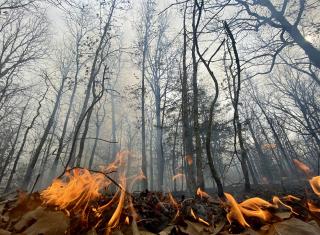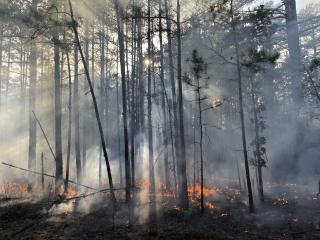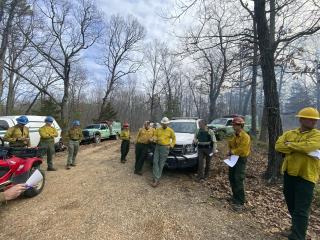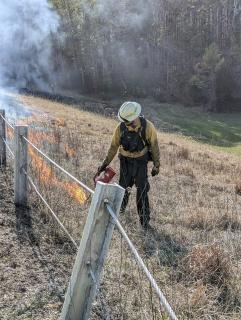Mark Twain NF, partners reduce wildfire risk

MISSOURI – Mark Twain National Forest, in collaboration with The Nature Conservancy in Missouri and several agencies, helped restore the forested landscape while providing essential fire training through prescribed burns in the Show Me state.
The Nature Conservancy-sponsored Prescribed Fire Training Exchange, or TREX, held Feb. 27 through March 9, aimed at improving interagency collaboration on these projects. It also served to reduce fire risk to local communities by removing excess vegetation that could help fuel a wildfire, as well as improve habitat.
Ryan Gauger, The Nature Conservancy’s fire and stewardship manager for the state of Missouri, said trainees came from nonprofits, state agencies, federal agencies and contractors across the country. Thirty students, plus six dedicated instructors, participated in the training operation. Participating organizations included Missouri Department of Conservation, Missouri Department of Natural Resources, Missouri Prescribed Fire Council, National Park Service and USDA Forest Service Eastern Region.
TREX has been in operation nationally for nearly two decades, Gauger added. “We took the existing model and adapted it to what we wanted to do here in Missouri. Through the TREX program, training is the primary focus. You must be in a trainee assignment to perform those roles. The real trick is to get people into these trainee roles and give them the experience that they need.”
“TNC is committed to this idea of collaborative fire. We know we can’t do it by ourselves. We know the federal governments and state governments can’t do it by themselves. It’s only by coming together that we can put meaningful fire back across the landscapes,” continued Gauger.
The prescribed fire training work took place in the Missouri Ozarks and is part of a four-year, cross-boundary grant for $1,439,346 in federal funding and $270,880 in funds and in-kind costs. The grant funds work on both state and private lands. Gauger said they plan to hold one TREX each year.

Participants burned a total of 15, 868 acres of vegetation, mostly on the Mark Twain National Forest. The remaining prescribed fire acreage occurred on The Nature Conservancy, Missouri Department of Conservation and Missouri DNR State Parks lands; just over 1,000 acres.
Seth Pearson is a fuels technician with the Mark Twain and served as deputy incident commander for TREX. He helped Gauger run TREX and acted as liaison, coordinating with the different instructors for the training modules.
Pearson said TREX went smoothly. “It’s always a challenge to build cohesive teams in a short time, when you have people who don’t know each other working together. The information exchange and training exchange functioned in tandem to help trainees improve their skills and obtain qualifications.
Prescribed fires have been taking place in North America since before the first Europeans arrived on our shores. “Native Americans have been doing their own version of prescribed fire (also known as cultural burning) for thousands of years, for a variety of reasons, including blueberry production, basket making material, hunting, ease of travel and more. It was not until the early 1900s that Anglo American settlers started trying to suppress fires,” Pearson added.

For more on this project check out the project video on the TNC Missouri Facebook page.
In 2021, the Forest Service Eastern Region, Missouri Department of Conservation, and Missouri Department of Natural Resources entered a shared stewardship agreement to improve collaboration across jurisdictional boundaries and to improve fire crew qualifications.
This project aligns with the Missouri Forest Action Plan priority of protecting forests from harm.

